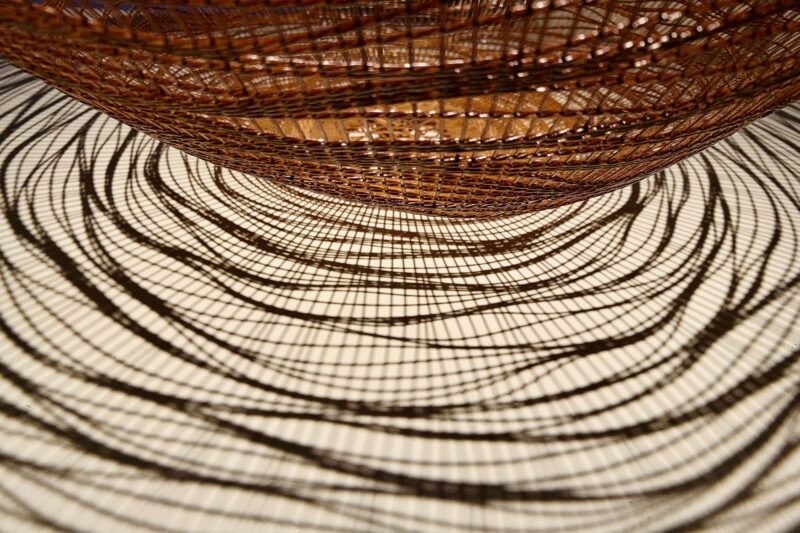02021-06-13 | Uncategorized
David Eagleman: ‘The working of the brain resembles drug dealers in Albuquerque’ | Neuroscience | The Guardian
In what way does the working of the brain resemble drug dealers in Albuquerque?
It’s that the brain can accomplish remarkable things without any top-down control. If a child has half their brain removed in surgery, the functions of the brain will rewire themselves on to the remaining real estate. And so I use this example of drug dealers to point out that if suddenly in Albuquerque, where I happened to grow up, there was a terrific earthquake, and half the territory was lost, the drug dealers would rearrange themselves to control the remaining territory. It’s because each one has competition with his neighbours and they fight over whatever territory exists, as opposed to a top-down council meeting where the territory is distributed. And that’s really the way to understand the brain. It’s made up of billions of neurons, each of which is competing for its own territory.
The following paragraph is a new and different way of looking at why we dream:
One of the big surprises of neuroscience was to understand how rapidly these takeovers can happen. If you blindfold somebody for an hour, you can start to see changes where touch and hearing will start taking over the visual parts of the brain. So what I realised is, because the planet rotates into darkness, the visual system alone is at a disadvantage, which is to say, you can still smell and hear and touch and taste in the dark, but you can’t see any more. I realised this puts the visual system in danger of getting taken over every night. And dreams are the brain’s way of defending that territory. About every 90 minutes a great deal of random activity is smashed into the visual system. And because that’s our visual system, we experience it as a dream, we experience it visually. Evolutionarily, this is our way of defending ourselves against visual system takeover when the planet moves into darkness.
I am not sure I am buying that entirely because dreams seem to be so much more than just maintaining control of computing real estate. But, while dreams may have started out as exercising and maintaining the visual territory of the brain perhaps over time those dreams were coopted by other parts of the brain, in order to digest experiences and ideas during downtime/sleep.
02021-06-12 | Uncategorized
A walk around town this week will reveal Apache Plume, super soft and very pretty. After the white petals fall away, many plumelike lavender styles remain, each 3 to 5 centimeters long. The plant will be covered with these pink clusters of curling, soft, and feathery styles after flowering. Go ahead put your face in it.
A basket and its shadow at the TAI Modern gallery on the corner of Paseo de Peralta and Guadalupe. One of my favorite galleries in town.
Yesterday’s sunset viewed from the cross at Fort Marcy.
You can click on each thumnail to expand the photo. Then you can click on that image to make it even larger. The gallery is a little clumsy and you will have to use the browser’s back arrow to return to this page.
02021-06-11 | Uncategorized
WHAT REALLY HAPPENS WHEN WE WALK? – The Age-Well Project
I like walking. No, I love walking. I have good ideas while walking. I work while I am walking – listening to mixes for a new album, for example. Today I walked 7.5 miles and it’s only 5PM. I have done about 20 miles in a day a number of times. The article I linked to has a whole lot of reasons why we should walk more. Here is a short excerpt but do click on the link and read the whole piece.
When we walk, our biggest muscles – those in our legs, glutes and back – produce a lipase that breaks down triglycerides. Why does this matter? Because high levels of circulating triglycerides harden our arteries and thicken our artery walls, a condition known as arteriosclerosis, which raises our risk of stroke, heart attack and heart disease. It’s one of the conditions that killed my father.
A body that doesn’t break down triglycerides is also less likely to process glucose – leading to type 2 diabetes. You see, movement also improves the body’s response to insulin. When we lie on the sofa excess glucose lingers in our blood. But when we walk, our muscles take that floating glucose and make use of it – so no blood sugar spike. Which is why I try and take a short walk after a large meal, even though lying on the sofa might feel a more obvious choice!
and
When we don’t move enough, our bones weaken, increasing our chances of osteoporosis. But now it appears that weak bones might mean more than a future of hip fractures and hospital stays. A study arrived on my desk last week linking hearing loss to low bone density. When researchers analysed data from 144,000 women over 34 years, they found that the risk of hearing loss was up to 40 percent higher in women with low bone density or with osteoporosis.
02021-06-11 | Santa Fe, Trees, Video
This morning this stretch of road looked like space, three dimensional and with thousands of little spaceships flying around at great speed. Cottonwood season.
02021-06-09 | Coffee, Santa Fe, Video
Running out of beans in the espresso machine I resorted to hand-grinding some beans I found in the freezer and made drip coffee. Can you *almost* smell it?





